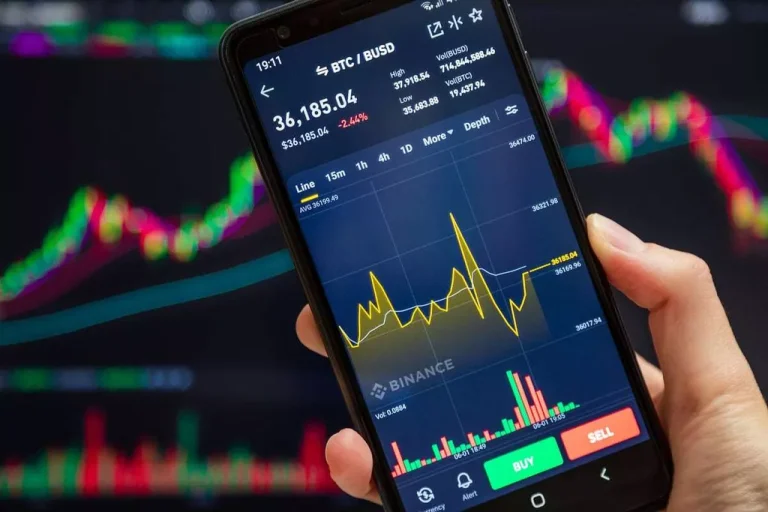These discount brokers enable investors to trade at a decrease value, however there’s a catch; traders don’t obtain the personalized funding recommendation that’s provided by full-service brokers. MMs are the very definition of the phrase – “with nice energy comes nice responsibility”. Many in style DeFi projects have taken advantage of liquidity pools to supply users a variety of decentralized monetary services and opportunities. This trust is cultivated and fortified by strict adherence to regulatory guidelines. The emphasis is on efficiently dealing with many trade requests, typically from a quantity of brokerages simultaneously. Integration is typically extra simple, emphasizing quick order execution.
- While the free market precept is especially optimistic for the worldwide market, some crises occur exterior of the pure market demand and supply modifications.
- 2) While speaking about direct entry to the ECN network, merchants have to have at least $ to enter the market.
- Effective threat management is crucial to mitigate these risks and ensure their own sustainability.
- Whether with market makers or liquidity suppliers, these relationships aren’t nearly contracts; they’re strategic alliances that can dictate the trajectory of a brokerage’s success.
- As for liquidity suppliers (LPs), they act as mediators between brokers and MMs.
As more market makers enter a particular market, competition intensifies, resulting in narrower spreads and reduced profit margins. Market makers must stability their pricing competitiveness with the need to cover costs and generate earnings. They work underneath the B-book mannequin, taking the other facet of their customer’s trades and don’t move the orders to liquidity suppliers. Artificial intelligence is today’s market making, facilitating a smooth circulate of concluded deals and offering immediate liquidity through mathematical algorithms.
Which Is Healthier For Forex Brokers, Liquidity Suppliers, Or Market Makers?
The unfold refers back to the distinction between the purchase and promote price of a monetary instrument. While there might be overarching agreements in place, the day-to-day interactions are driven by market dynamics, with costs, volumes, and spreads repeatedly adjusting based on real-time situations. LPs don’t necessarily require the same depth of capital reserves as market makers. Their major operate is facilitating trades, which frequently means they offset positions more frequently and may not maintain them for extended periods. Liquidity providers and market makers utilize advanced know-how and infrastructure to make sure quick and reliable execution, minimizing latency and delays. In these situations, it is important to provide ample liquidity to stabilise the costs and ensure that wholesome currencies don’t endure from momentary shocks to the system.

By partnering with reputable liquidity suppliers or market makers, foreign exchange brokers can ensure they provide competitive trading circumstances to their shoppers and preserve a liquid trading setting. Liquidity suppliers often hook up with a number of market makers to entry extra liquidity sources. This permits them to ensure adequate liquidity for their shoppers, even in extremely liquid markets or in periods of elevated trading activity. By leveraging the services of market makers, liquidity providers can offer extra competitive prices and a broader vary of financial devices to their shoppers.
Dealer Vs Market Maker: An Summary
Brokerage companies need to supply lively traders with a broad order guide, particularly while speaking about fewer in-demand pairs. As such, traders face the situation after they can not purchase and promote currencies by the market price. Losses force traders to modify their give attention to different brokerage platforms, the place orders are executed instantly. Liquidity Providers are companies that connect a dealer with the most important banks and funds; that is why the order guide gets tons of bid and ask orders for almost all of trading pairs. To summarize the distinction between market maker vs liquidity supplier, do not overlook that their roles diverge. MMs are liable for FX inflows and outflows, sustaining the market lively while a liquidity supplier is a bridge between brokerage firms and market makers.

Institutions like JP Morgan and Goldman Sachs are excellent examples of the highest-tier MMs, as they influence quite a few industries at the identical time. These colossal firms work carefully with federal and international banks to regulate rates of interest, currency pairing ratios, spreads, etc. A overseas exchange (Forex) dealer is a agency whose function is to connect merchants and traders to a specialised platform the place liquidity provider vs market maker international currency may be purchased and bought. Another instance is the crypto market, the place probably the most liquid asset is Bitcoin, which accounted for 53% of the entire volume of crypto in December 2023. Some examples of the bigger market makers within the trade include BNP Paribas, Deutsche Bank, Morgan Stanley, and UBS. Tier 1 and Tier 2 groups are two classes into which market makers may be categorized.
How Liquidity Suppliers And Market Makers Work Together
Options give traders the best, but not the obligation to buy or sell securities at a preset worth the place the contract expires sooner or later. On the other hand, a market maker helps create a marketplace for investors to buy or promote securities. In this article, we’ll define the variations between brokers and market makers. Some brokerages are concerned in both A-book and B-book processing known as a hybrid model . This may be determined by taking a glance at the kind of the buying and selling situations they provide. Hence, the brokerage offsets a share of the commerce into the true market (A-book) and warehouses the rest of the trade (B-book).
For brokerage owners, understanding the regulatory panorama isn’t just about avoiding penalties; it’s a strategic necessity. Aligning operations with regulations can enhance the brokerage’s popularity, attracting more discerning shoppers and partners. It can also stop pricey disruptions that may arise from regulatory infringements. An experienced copywriter with a deep monetary background and a knack for producing accessible, fascinating and priceless content material. I demystify the world of fintech and crypto by producing participating content in this area.
In contrast to DD brokers, which trade with shoppers using their very own belongings, NDD companies compile their order e-book utilizing quotes from liquidity suppliers. While they also contribute to market stability, their impression is usually extra pronounced in widely-traded, liquid markets. By providing depth, they guarantee smooth commerce executions, even throughout high-volume trading instances. Yes, some liquidity providers also act as market makers, providing each liquidity provision companies and intermediary functions. Liquidity suppliers provide direct market access and aggregate liquidity from various sources, while market makers act as counterparties to traders’ trades, offering liquidity from their own inventory. Liquidity providers operate on a non-dealing desk (NDD) model, that means they do not take the alternative facet of the traders’ positions.
Elements To Contemplate When Choosing A Liquidity Provider Or Market Maker
In summary, liquidity suppliers and market makers play essential roles in making certain liquidity and efficient trading operations in the financial markets. While liquidity providers focus on supplying liquidity on to the market, market makers act as intermediaries and facilitate buying and selling. Understanding the variations between these two entities is essential for merchants, as it may possibly affect their buying and selling experience, prices, and execution high quality. As for liquidity suppliers (LPs), they act as mediators between brokers and MMs.
The term ‘market maker’ is expounded to players who ‘make the market’ – i.e., banks, funds, and other establishments are the foundation for the Forex market. They maintain hundreds of thousands of dollars and other currencies, maintaining the highest stage of FX turnover. These main players purchase and sell big volumes of assets, impacting their rates and capitalizing on the differences. Crypto exchanges usually incentivize market makers and liquidity providers via varied payment structures and rewards applications. These incentives encourage their participation, benefiting merchants and fostering a more vibrant trading ecosystem.
Market makers primarily act as wholesalers by buying and promoting securities to satisfy the market—the costs they set replicate market provide and demand. When the demand for a security is low, and supply is high, the price of the security might be low. If the demand is high and supply is low, the price of the safety will be high.

As a good instance, the New York Stock Exchange (NYSE) distinguishes a class of market-making participants called “specialists”. A specialist turns into the second party to each transaction in a selected safety on the change. Market makers assist keep the market functioning, which means if you want to sell a bond, they’re there to purchase it. Similarly, if you need to purchase a stock, they are there to have that stock available to promote to you. In this realm, distinguishing the position of a Liquidity Provider vs Market Maker is essential, as both are basic to the industry’s vitality and efficiency.
However, this might sometimes mean that merchants might not at all times get the most favorable costs, particularly if the Market Maker is the dominant entity in a specific asset class. In such a state of affairs, a dealer wanting to buy might discover it difficult to locate an appropriate seller. Conversely, if there aren’t enough buyers, the market maker would buy the asset. By regularly adjusting their quoted costs and inventory primarily based on market dynamics, they ensure that traders can all the time discover a counterpart for their trade. As extra members enter the market, the competition intensifies, resulting in narrower spreads and reduced profitability.
